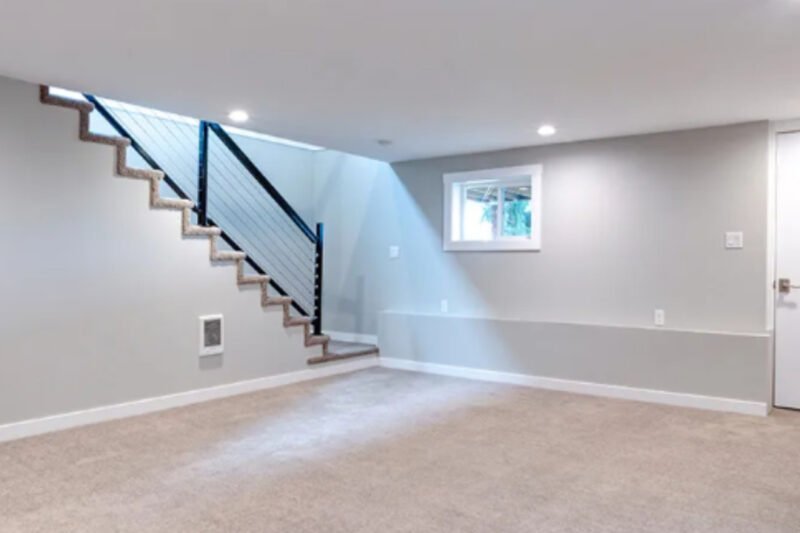When planning a basement remodeling Houston renovation, there are various aspects to consider. For example, examining your wants and aspirations, establishing a goal for your basement, and locating the inspiration that will provide you with a clear picture. The ideal Basement Remodeling Guide: Things To Consider Before You Start will assist you in selecting the proper materials, and you should next hunt for a reputable contractor who can make your vision a reality.
You must have a basement renovation guide that outlines the dos and don’ts to complete this project. In addition, it will guide you through the entire design process by providing precise guidelines and creative inspirations. It also provides a few tips and strategies for spending your money wisely.

Renovating a basement might cost thousands of dollars, but if you keep to your daily needs and do a little sprucing, you can go a long way. Ask yourself, what is missing from your home? While deciding, you must also evaluate the most practical means of acquiring them.
A decent basement renovation is both opulent and practical. Here is a guide on basement remodeling that will assist you in designing your bathroom to your exact specifications.
Always Waterproof Your Basement
Your basement must be waterproofed as a priority during renovations. The bathroom is the second-wettest spot, followed by the basement. In addition, it is considerably worse because the walls collect rainwater from the surrounding soil.
Therefore, before beginning any demolition or development, an examination is required. If the walls of your basement develop cracks or swell due to moisture, you must hire a professional to assist you waterproof the entire area.
You do not want any paint peeling or mold and mildew following the completion of your renovation project. Therefore, the best way to avoid these complications is to inspect all the walls before beginning your renovation project. To prevent future moisture problems, you might utilize a self-draining, high-capacity dehumidifier.
Utilize Waterproof Materials When Constructing
Once the inspection is complete and construction has begun on your new remodeling project, be sure to utilize watertight materials. That your basement is not now harmed by dampness does not indicate that it never will be.
The basement is constructed below ground and is especially susceptible to water damage. Therefore, it is prudent to utilize waterproof materials while renovating a basement.
Avoid using traditional materials such as drywall, timber framing, fireboard moldings, etc., regardless of what you intend to construct in your basement. Choose waterproof wall panels, mold-resistant PVC moldings, a moisture-resistant drop ceiling, waterproof flooring, a water-resistant subfloor system, etc.
These measures aid in preventing water damage to your newly constructed living area. Some of these tasks may necessitate hiring a professional, while adept do-it-yourselfers may be able to handle others.
Consider Lighting
You are fortunate if your basement has above-grade walls that allow for wide windows and glass doors.
Many basements have limited access to natural light because the windows are located high on the walls or there are no windows. In such circumstances, it is your responsibility to provide adequate lighting for your basement.
Mold and mildew can grow on the walls of any space if it lacks adequate lighting. Fortunately, suspended or dropped ceilings can be installed in the basement. It can accept many light fittings, including recessed lighting, track lighting, and fluorescent troffers.
Choose lighting based on the purpose of your basement renovation. People have many ideas for their basements, including a video area, a game room, and a minibar. You can even add additional living space with amenities like a bedroom, bathroom, and kitchenette.
Add Pipes and Beams
Depending on the number of exposed ducts and beams in the basement, you may need to conceal them during the remodeling process. There are a variety of methods for concealing these hanging ducts.
Some individuals simply paint them with vibrant, colorful hues, while others encase them in soffits or wood-framed enclosures and cover them with drywall or MDF. However, it is not recommended to use drywall or wood in a basement.
If your basement’s ducts hang too low, you can divide them into smaller ducts. You may alternatively replace these ducts with larger vents that do not require a great deal of headroom. Similarly, you must retain the services of a professional, such as a contractor who may assign an electrician for such tasks. Additionally, you must consult with the building department for approval.
Add A Drainage System
Rebuilding your drainage system is another crucial step in this guide to basement remodeling. Many basement remodeling projects include the addition of a bathroom or kitchen. It will be necessary to modify your drainage system to convey your sewage waste upstairs.
There are several ways to transport sewage and wastewater uphill into the central drainage system.
The most affordable option is the macerating bathroom pump. This pump automatically turns on and transports sewage and water waste from the toilet, shower, sink, bathtub, etc. to the main sewer line. These units can easily fit behind the toilet or the wall and may require the assistance of a professional to install.
For info and assistance with basement remodeling contact our basement remodeling Houston company at (713)930-0003. You can also visit our website for services and Basement Remodeling DIY: What You Need To Know.


No Comments
Be the first to start a conversation